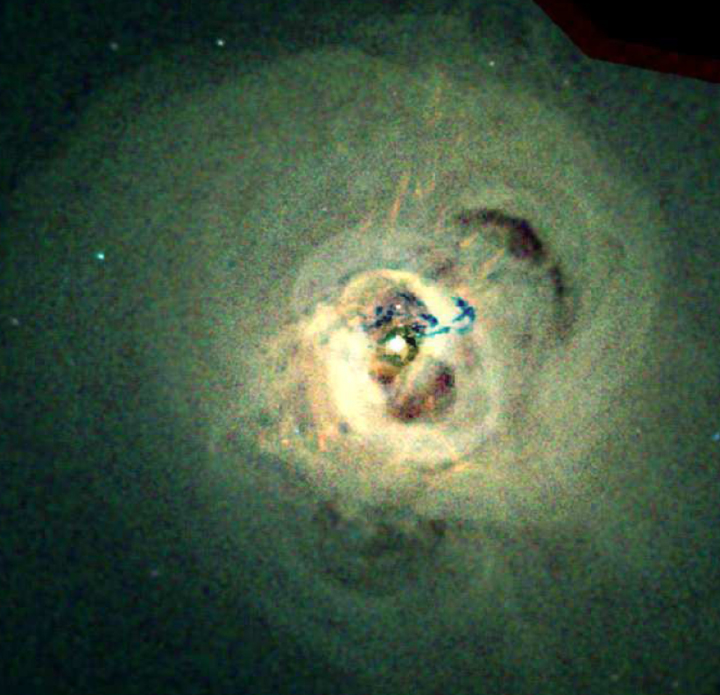Wednesday, December 07, 2005
Bad Weather in the Perseus Cluster

Call it the cosmic Katrina. The Perseus Cluster, some 250 million light years away from Earth, is a giant bundle of destruction shredding its cosmic neighborhood to gauzy wisps of interstellar dust.
The cluster has been wracked by some nasty cosmic "weather" for hundreds of millions of years. Now scientists from Harvard and NASA have trained their orbital Chandra X-ray observatory at the cluster for 270 hours for detailed observations.
They've reported that the cluster, which is one of the most massive objects in the universe, "contains thousands of galaxies immersed in a vast cloud of multimillion degree gas with the mass equivalent of trillions of suns." They also observed an entire galaxy that's being torn apart and cannibalized by its giant cousin, called Perseus A, residing at the center of the cluster. (See the dark blue filaments near the center of the image.)
Perseus A itself is spinning around a vicious black hole. Resembling a cosmic hurricane, the scientists spotted huge low pressure regions expanding outward 300,000 light years from the space warping singularity. "The plumes are due to explosive venting from the vicinity of the supermassive black hole," the scientists said.
They said that the venting produces sound waves which heat the gas throughout the inner regions of the cluster and prevent the gas from cooling and making stars at a high rate. "This process has slowed the growth of one of the largest galaxies in the Universe," they said. "It provides a dramatic example of how a relatively tiny, but massive, black hole at the center of a galaxy can control the heating and cooling behavior of gas far beyond the confines of the galaxy."
In the Greek mythology, Perseus was the son Zeus and Danae. Besides riding the winged horse Pegasus and liberating Andromeda, he's perhaps best remembered for chopping off Medusa's slithering head.